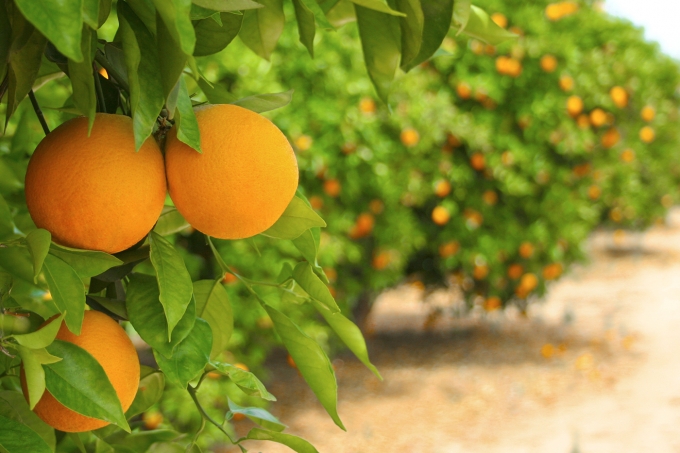A bacterial disease, HLB, which is spread by the Asian citrus psyllid (ACP) has reduced Florida’s citrus production by 50 percent from 2003-2017, according to the National Agricultural Statistics Service. HLB has no known cure and pesticides have had only minimal impact on ACP. Recently, the ACP was detected in Southern California, along the ground freight corridors that link Los Angeles with the lower San Joaquin Valley, which is where the majority of the nation’s citrus is now grown.
Currently, there is one promising defense against ACP under development, Citrus Under Protective Screens (CUPS). The permanent protective screen structures block all pests larger than 0.5 microns from trees inside the structure. In small-scale tests, CUPS kept out the problematic pests and produced HLB-free trees.
However, CUPS have not been widely implemented because too many uncertainties exist about the productivity and economic returns of screen-protected citrus. A multi-disciplinary team led by UC Santa Barbara professors Chandra Krintz and Rich Wolski from the Computer Science Department, and Steven DenBaars from the Materials and Electrical and Computer Engineering departments plan to answer those questions. They plan to explore new technologies for measuring and controlling environmental conditions with and without CUPS in order to make them economically viable and sustainable for growers.
Their project, Sensing and Lighting for Citrus Under Protective Screens, was one of four proposals selected to receive an inaugural research seed award by UCSB’s Institute for Energy Efficiency (IEE). The IEE at UCSB is an interdisciplinary research institute committed to improving energy efficiency across three key themes: smart societal infrastructure, computing and communications, and the food-energy-water nexus. Funded by a gift from an anonymous donor, the selected proposals are innovative projects in the early stages of development that align with at least one IEE theme. The seed program is intended to produce preliminary results that the scientists can use to apply for major external funding to further fund and expand their research.
In the collaborative spirit of UCSB and the IEE, the CUPS project involves researchers who specialize in lighting, computer science, entomology, farm operations management, and agriculture pathology. While their work will immediately benefit the citrus industry, the project also has the potential to impact crops grown in other controlled environments like greenhouses, or through alternative methods like vertical farming.
The $50,000 grant allows the team to quantify the impact that CUPS have on growing conditions and identify potential opportunities for sensing, lighting, actuation, control and automation to minimize the costs imposed on growers. The team’s strategy includes using instruments like weather sensors, multi-spectral cameras, and insect traps, as well as evaluating lighting and robotic options, and incorporating machine learning.
In addition to establishing test CUPS at UCSB, researchers will also have access to the first experimental commercial-sized CUPS deployment, currently under construction at the Lindcove Research Extension Center in Tulare County.

